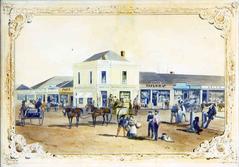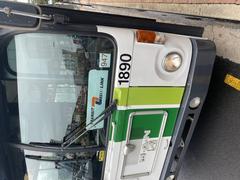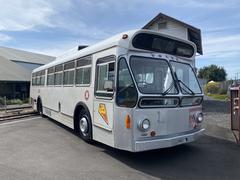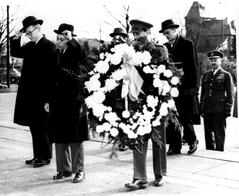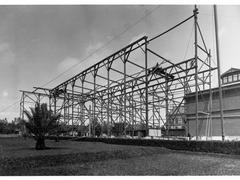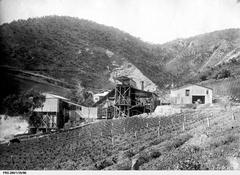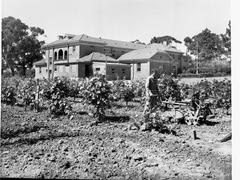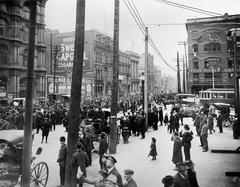
Comprehensive Guide to Visiting Beehive Corner, Adelaide, Australia
Date: 01/08/2024
Introduction
Beehive Corner, situated at the bustling intersection of King William Street and Rundle Mall in Adelaide, Australia, is a landmark that epitomizes the city’s rich historical and cultural tapestry. This iconic site, renowned for its distinctive Gothic Revival architecture, has been a cornerstone of Adelaide’s commercial and social life since the mid-19th century. Originally named after a draper’s shop called ‘The Beehive,’ established by tailors Brewer and Robertson in 1849, the corner quickly became a central hub of activity, symbolizing industriousness and prosperity with its beehive motif (SA History Hub). Over the decades, Beehive Corner has weathered economic challenges, undergone significant architectural transformations, and retained its status as a cultural and commercial epicenter, further solidified by the presence of Haigh’s Chocolates since 1950 (Wikipedia). This comprehensive guide delves into the historical, architectural, and cultural significance of Beehive Corner, offering valuable visitor information and tips for exploring this Adelaide gem.
Table of Contents
- Introduction
- Early Beginnings
- Ownership and Economic Challenges
- Architectural Evolution
- Cultural Significance
- Haigh’s Chocolates
- Restoration Efforts
- Heritage Listing
- Visitor Information
- Modern-Day Relevance
- FAQ
- Conclusion
Early Beginnings
Beehive Corner, located at the prominent intersection of King William Street and Rundle Mall in Adelaide, has a rich history dating back to the mid-19th century. The site originally gained its name from a draper’s shop called “The Beehive,” which was opened by tailors Brewer and Robertson in October 1849 (SA History Hub). The shop was known for its beehive motif on the glass door, rendered in gold leaf, symbolizing a busy trading center where people buzzed around like bees (Adelaide City Tour).
Ownership and Economic Challenges
The Beehive shop saw several owners over the years. J.V.B. Ryley managed the shop from 1850 to 1858, followed by Israel Simmons, who ran it until 1886. The economic downturn of the late 19th century led to the failure of many businesses, including The Beehive (Wikipedia). Despite these challenges, the corner retained its name and continued to be a bustling commercial hub.
Architectural Evolution
The current Beehive Corner building, completed in 1896, replaced the original structure. Designed by architects George Klewitz Soward and Thomas English, the building is a striking example of Gothic Revival architecture. It features a distinctive corner turret shaped like a beehive, topped with a lone gilded bee (Rundle Mall). This design choice was both a nod to the site’s historical name and a symbol of industriousness and prosperity.
Cultural Significance
For over a century, Beehive Corner has been a popular meeting spot for locals. The phrase “Meet you at the Beehive Corner” became ingrained in Adelaide’s cultural lexicon, underscoring the site’s importance as a central rendezvous point (Adelaide City Tour). The corner’s prominence is further highlighted by its location between the railway station and the city’s main shopping precinct, making it a convenient and recognizable landmark.
Haigh’s Chocolates
In 1950, the prime corner section of the Beehive Corner complex was sold to confectioner C.A. Haigh, who had been leasing the space for 35 years. This marked the beginning of Haigh’s Chocolates, an iconic South Australian brand that continues to operate from the Beehive Corner store to this day (Wikipedia). The presence of Haigh’s Chocolates has added another layer of cultural and commercial significance to the site.
Restoration Efforts
The Beehive Corner building has undergone several changes and restorations over the years. In the 1960s, the building’s integrity was compromised by ground floor redevelopment, dominant advertising signage, and the removal of Gothic gables on the western elevation. However, in 1997-1998, the building received Heritage Incentives Scheme funding to restore its original elements. This restoration included the casting of a new bee in solid aluminum, gilded with gold, to replace the original that had gone missing (City of Adelaide).
Heritage Listing
The Beehive Corner building is listed as a State Heritage Place, recognizing its architectural and historical significance. The building is a rare example of commercial Gothic Revival architecture in Adelaide and serves as a testament to the city’s rich commercial history (Experience Adelaide). The heritage listing ensures that the building’s unique architectural features and historical importance are preserved for future generations.
Visitor Information
Visiting Hours: Beehive Corner is accessible to the public 24/7, though individual shop hours may vary.
Tickets: No tickets are required to visit Beehive Corner, but guided tours of the area may have associated costs.
Accessibility: The site is wheelchair accessible, with nearby public transport options making it easy to visit.
Nearby Attractions: While at Beehive Corner, you can also explore Rundle Mall, the Adelaide Central Market, and the Art Gallery of South Australia. Each of these attractions offers a unique experience that complements your visit to Beehive Corner.
Modern-Day Relevance
Today, Beehive Corner remains one of Adelaide’s most recognized landmarks. Its unique architectural features, including the corner turret and the gilded bee, continue to attract both locals and tourists. The building’s location at the intersection of major streets and its proximity to shopping and dining options make it a central and vibrant part of the city (Rundle Mall).
FAQ
Q: What is Beehive Corner?
A: Beehive Corner is a historical and cultural landmark located at the intersection of King William Street and Rundle Mall in Adelaide.
Q: What are the visiting hours for Beehive Corner?
A: Beehive Corner is accessible 24/7, but individual shop hours vary.
Q: Do I need tickets to visit Beehive Corner?
A: No tickets are required for Beehive Corner; however, guided tours may have associated costs.
Q: Is Beehive Corner wheelchair accessible?
A: Yes, the site is wheelchair accessible.
Q: What nearby attractions can I visit?
A: Nearby attractions include Rundle Mall, the Adelaide Central Market, and the Art Gallery of South Australia.
Conclusion
Beehive Corner stands as a testament to Adelaide’s rich commercial and cultural heritage, embodying the city’s evolution from a bustling 19th-century trading hub to a modern-day landmark of architectural and historical significance. Its Gothic Revival architecture, marked by the iconic beehive turret and the gilded bee, continues to attract locals and tourists alike. The ongoing presence of Haigh’s Chocolates adds a layer of commercial and cultural significance, making Beehive Corner not just a historical site but a vibrant part of Adelaide’s urban landscape (Rundle Mall). Restoration efforts and heritage listings ensure that this landmark will be preserved for future generations, maintaining its role as a central meeting point and a symbol of Adelaide’s industrious spirit (City of Adelaide). Whether you are a history enthusiast, an architecture aficionado, or a casual visitor, Beehive Corner offers a unique glimpse into the past and present of Adelaide, making it a must-visit destination in the heart of the city.
References
- SA History Hub, 2023, Brewer and Robertson (SA History Hub)
- Wikipedia, 2023, Beehive Corner (Wikipedia)
- Adelaide City Tour, 2023, The Fascinating History of Beehive Corner (Adelaide City Tour)
- Rundle Mall, 2023, Things to Do at Beehive Corner (Rundle Mall)
- City of Adelaide, 2023, Beehive Corner Blog (City of Adelaide)
- Experience Adelaide, 2023, Heritage Places (Experience Adelaide)
- Architecture Australia, 2023, Gothic Revival Architecture (Architecture Australia)
- Haigh’s Chocolates, 2023, Haigh’s Chocolates History (Haigh’s Chocolates)
- South Australian History Hub, 2023, Beehive Corner Social Significance (South Australian History)
- Adelaide Tourism, 2023, Beehive Corner Visitor Information (Adelaide Tourism)
- Heritage South Australia, 2023, Heritage Register (Heritage South Australia)
- University of Adelaide, 2023, Educational Significance (University of Adelaide)
- Symbolism in Architecture, 2023, Beehive Corner Symbolism (Symbolism in Architecture)
